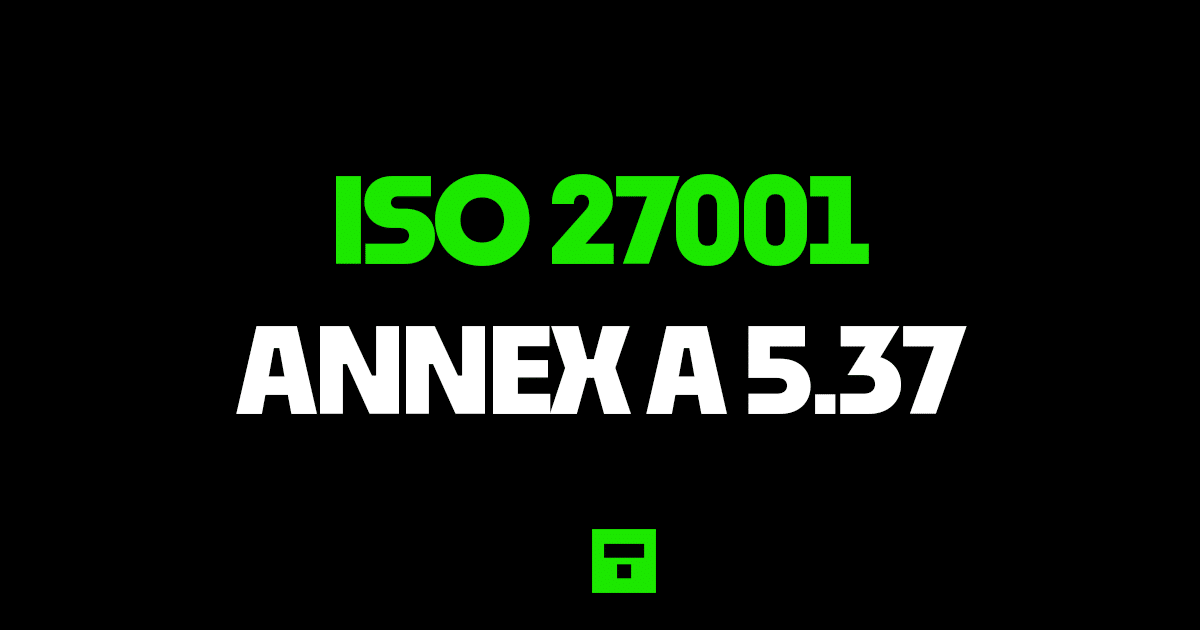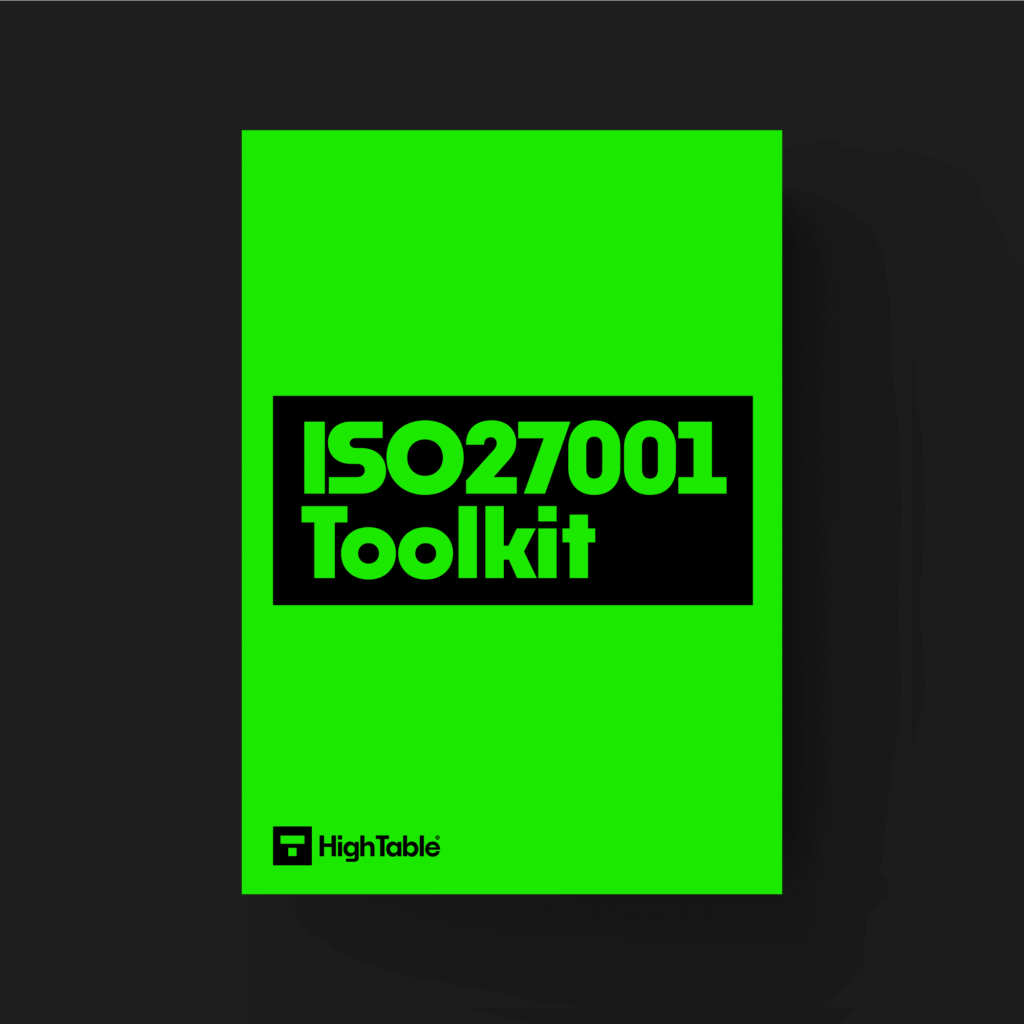ISO 27001 Documented Operating Procedures
In this ultimate guide to ISO 27001 Annex A 5.37 Documented Operating Procedures you will learn
- What is ISO 27001 Annex A 5.37
- How to implement ISO 27001 Annex A 5.37
I am Stuart Barker, the ISO 27001 Ninja and author of the Ultimate ISO 27001 Toolkit.
With over 30 years industry experience I will show you what’s new, give you ISO 27001 templates, show you examples, do a walkthrough and show you how to implement it for ISO 27001 certification.
Table of contents
- ISO 27001 Documented Operating Procedures
- What is ISO 27001 Annex A 5.37?
- Implementation Guide
- ISO 27001 Templates
- What are the Benefits of ISO 27001 5.37 Documented Operating Procedures?
- Why is ISO 27001 Annex A 5.37 Documented Operating Procedures important?
- Matrix of ISO 27001 Controls and Attribute values
What is ISO 27001 Annex A 5.37?
ISO 27001 Annex A 5.37 Documented Operating Procedures is an ISO 27001 Annex A control that wants you to document pretty much everything. It wants documented procedures for information processing facilities but take this as you will need to document all processes and procedures.
Purpose
The purpose of ISO 27001 Annex A 5.37 Documented Operating Procedures is to ensure the correct and secure operation of information security processing facilities. It is about process maturity. Having a documented process that is repeatable and if repeated the results would be consistent. It isn’t saying you are not doing it. It is saying, document it.
Definition
The ISO 27001 standard defines ISO 27001 Annex A 5.37 Documented Operating Procedures as:
Operating procedures for information processing facilities should be documented and made available to personnel who need them.
ISO 27001:2022 Annex A 5.37
Implementation Guide
The headline guidance is, document all of your process and procedures. Do it to a level that is appropriate to you. Consider documenting common exception steps or steps in the process when the process does not go as intended.
When to document procedures
All the time. But for guidance the standard gives examples such as
- when a procedure is performed by many people and needs to be done in the same way
- when something is performed rarely and can be forgotten when it is needed again
- when you do something new and if not done correctly it will create a risk
- before someone else is taking on the procedure
What to document
The list is long. Take every process that you do for information security and document it. The standard provides examples, they are basically the processes and procedures of the standard. If you want the bare minimum then let me indulge you.
- Specify who is responsible
- document secure installation and configuration
- document processing and handling of information, include manual and automatic methods
- document backups and resilience
- document scheduling requirements
- document interdependencies between systems
- document instructions for handling errors
- document support and escalation contacts
- document storage media handling
- document restart and recovery procedures
- document the management of audit logs, system logs, video monitoring, audit trails
- document capacity management
- document maintenance
Update procedures
Update and review procedures as needed but at least annually. The standard does not say at least annually. But it will catch you out if you do not.
Authorise changes to procedures
When you change something that change needs to be authorised with some evidence that the authorisation took place.
ISO 27001 Templates
Having an ISO 27001 template for control 5.37 can help fast track your implementation. The ISO 27001 Toolkit is a the ultimate resource for your ISO 27001 implementation.
DO IT YOURSELF ISO 27001
All the templates, tools, support and knowledge you need to do it yourself.
What are the Benefits of ISO 27001 5.37 Documented Operating Procedures?
Other than your ISO 27001 certification requiring it, the following are the top 5 benefits of ISO 27001 Annex A 5.37 Documented Operating Procedures:
- You cannot get ISO 27001 certification without it.
- Improved security: You will have an effective information security implementation that is based on documented processes that are repeatable and measurable
- Reduced risk: You will reduce the information security risks by having documented procedures that you and others follow
- Improved compliance: Standards and regulations require you to have documented operating procedures
- Reputation Protection: In the event of a breach having a documented operating procedures in place will reduce the potential for fines and reduce the PR impact of an event
Why is ISO 27001 Annex A 5.37 Documented Operating Procedures important?
The main reason it is important is because it gives maturity to processes. Having them documented and approved will allow consistency of operation. It will aid the communication of what is expected of people. It will address the requirements of the ISO 27001 standard.
Matrix of ISO 27001 Controls and Attribute values
| Control type | Information security properties | Cybersecurity concepts | Operational capabilities | Security domains |
|---|---|---|---|---|
| Preventive | Availability | Protect | Asset management | Governance and ecosystem |
| Corrective | Confidentiality | Recover | Physical security | Protection |
| Integrity | System and network security | Defence | ||
| Application Security | ||||
| Secure configuration | ||||
| Identity and access management | ||||
| Threat and vulnerability management | ||||
| Continuity | ||||
| Information security event management |


